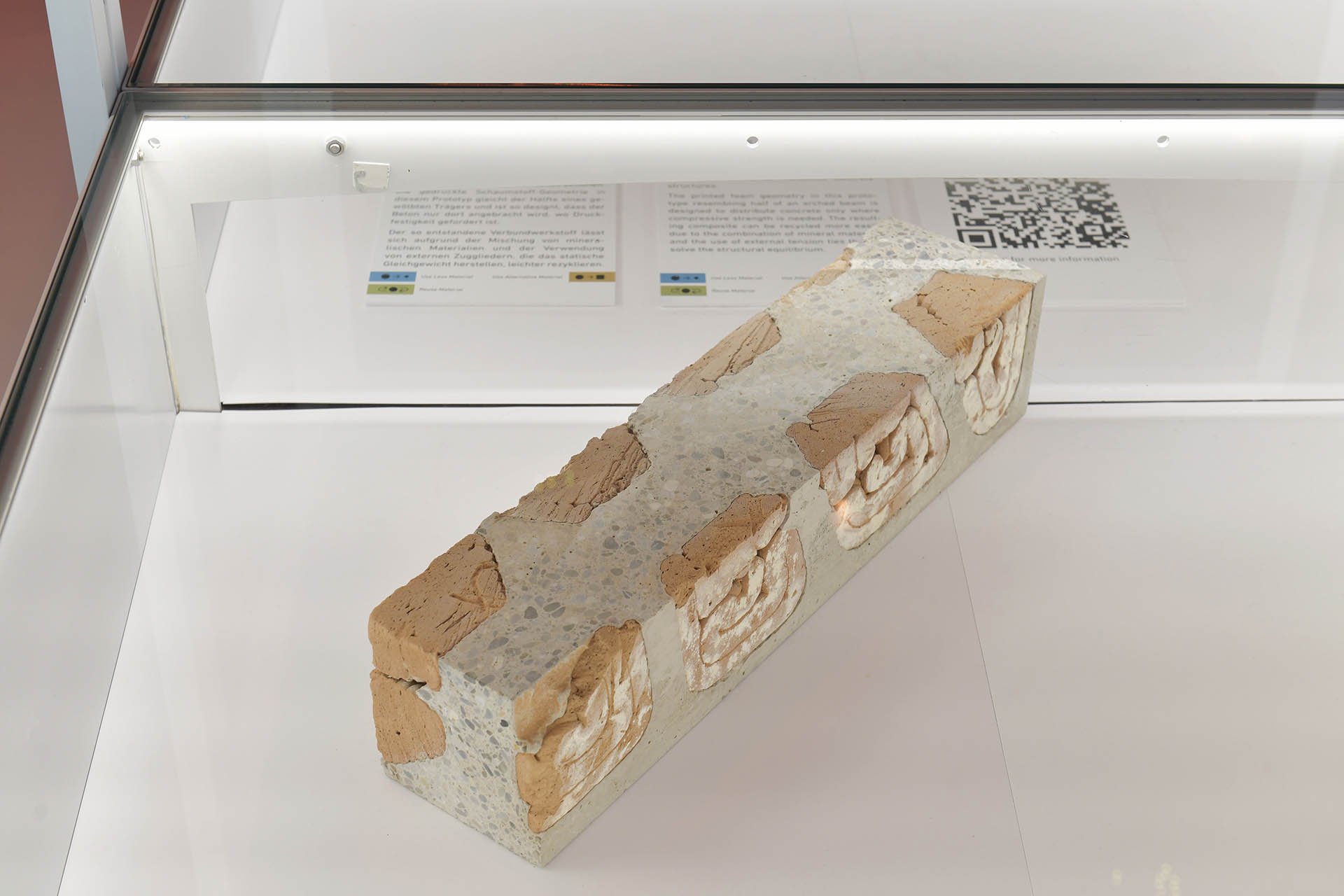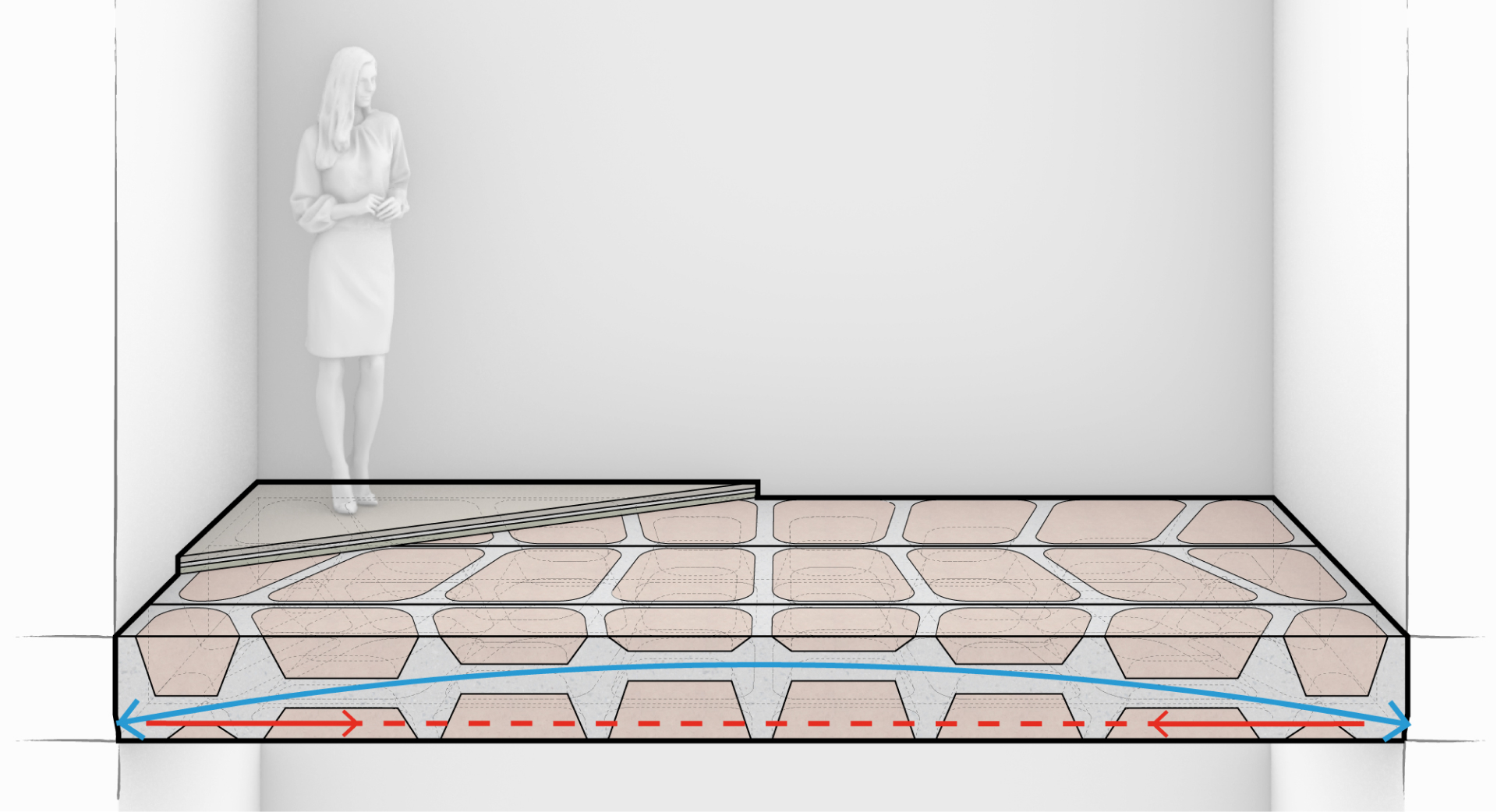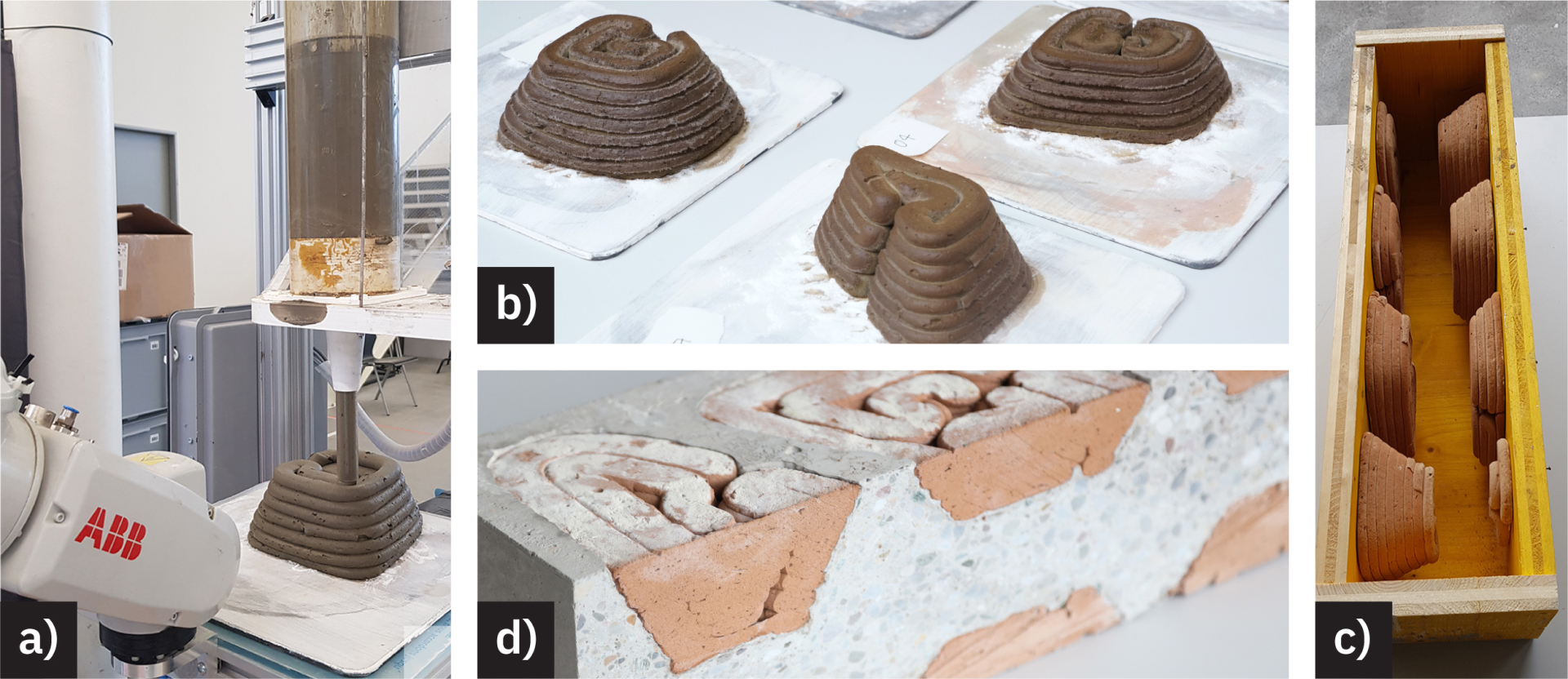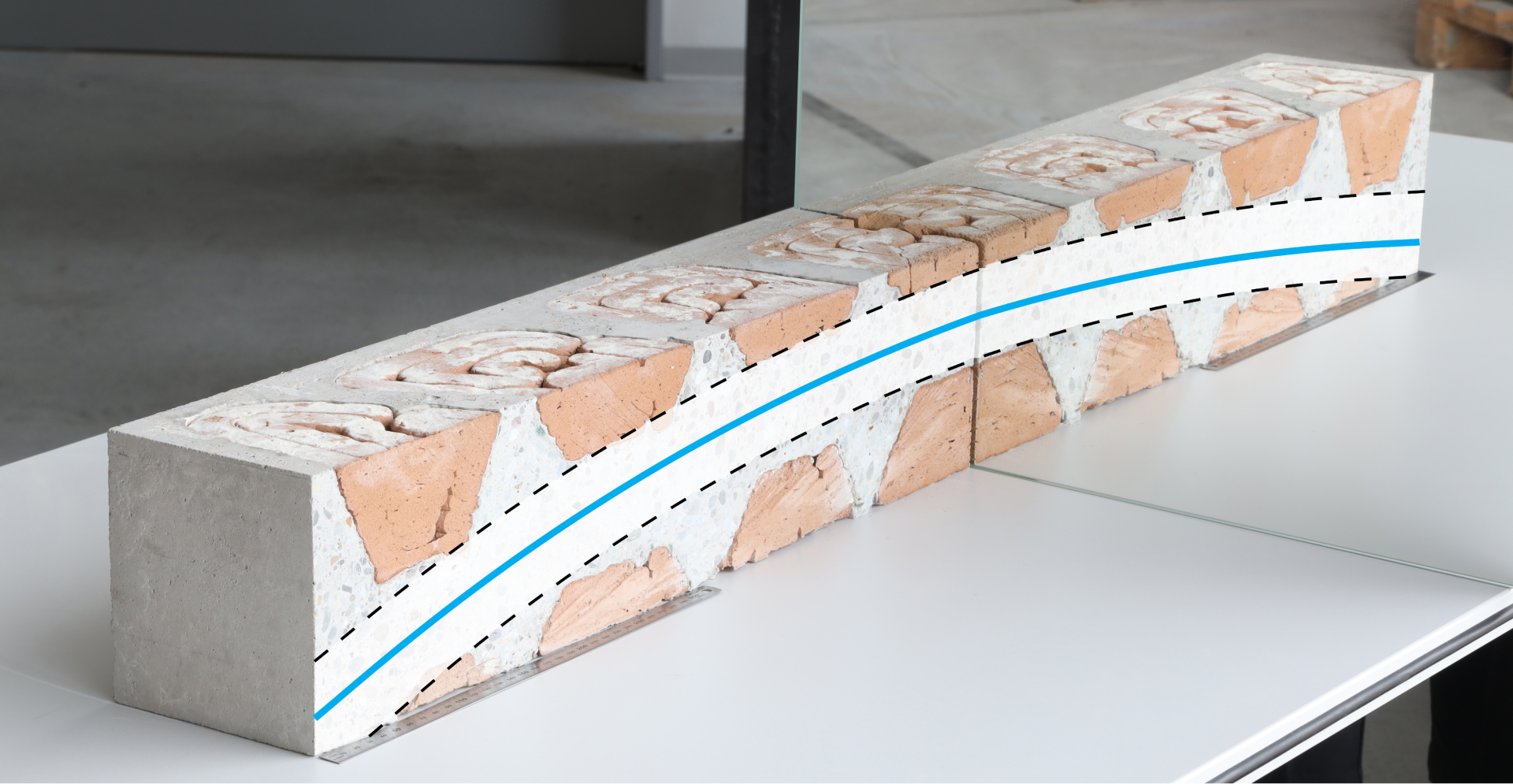The 50% Beam

Custom stay-in-place formwork made by mineral foam 3D-printing can save up to 50% of concrete and 60% of the total weight compared to conventional monolithic concrete structures. The printed foam geometry in this prototype, resembling half of an arched beam, is designed to distribute concrete only where compressive strength is needed. The resulting composite can be recycled more easily due to the combination of mineral materials and the use of external tension ties that resolve the structural equilibrium.
This prototype demonstrates how 3D-printed mineral foam can be used as bespoke stay-in-place formwork to save material and weight in geometrically optimised concrete structures. The printed foam geometry is designed to distribute concrete as a parabolic arch in compression. The beam spans 1.2 m and is shown here in half the length with a longitudinal cut revealing the material distribution. This novel method enables the fabrication of optimised complex geometries that can save up to 50% of concrete and 60% of the total weight when compared to conventional monolithic construction. Moreover, the resulting composite can be easier recycled due to the combination of mineral materials and the use of external tension ties that resolve the structural equilibrium.
The research on foam 3D-printing is developed at Digital Building Technologies, ETH Zürich, in collaboration with the innovative insulation material startup and ETH spin-off FenX AG. The presented study was conducted in collaboration with Dr. Cristian Calvo-Barentin, former Block Research Group, ETH Zürich..
3D visualisation of the floor structure concept. The blue line indicates the parabolic arch where the strength of concrete is required. The red line indicates steel tension ties to resolve the structural equilibrium.
Link: arched_floor_section.jpg


